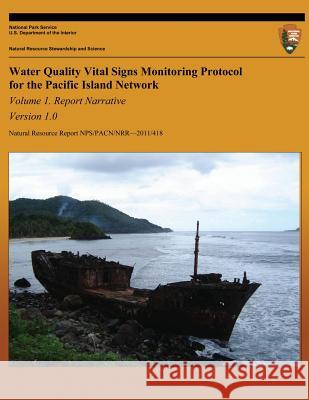Water Quality Vital Signs Monitoring Protocol for the Pacific Island Network: Volume 1-Version 1.0 » książka
Water Quality Vital Signs Monitoring Protocol for the Pacific Island Network: Volume 1-Version 1.0
ISBN-13: 9781492332473 / Angielski / Miękka / 2013 / 110 str.
Water resources in the Pacific Island Network (PACN) support rich and diverse ecosystems and aquatic communities that include corals reefs, anchialine pools communities (endemic to Hawaii), and freshwater stream communities. These water resources span a range of conditions from pristine to highly impaired water bodies. Both point and non-point sources impact the waters of many of our network parks at various locations to varying degrees. Aquatic resource protection is required by all the governments of the PACN, and water quality is widely used as an indicator of aquatic resource condition by regulators and ecologists. The United States Clean Water Act (CWA) of 1977 requires States and Territories to promulgate legally enforceable water quality standards (WQS) and lists of waters not currently meeting or expected to meet the standards. This protocol should provide the parks with some of the summary information necessary to determine their compliance with the applicable WQS in addition to providing correlative environmental data to ecologists. The water quality vital sign is closely linked with the benthic marine community, marine fish, groundwater, and freshwater animal communities vital signs, and monitoring efforts will be conducted in parallel to maximize data value. The water quality protocol will be implemented in all PACN parks. This protocol provides the methodology for addressing two monitoring questions: 1) What are the ranges and variances of the network water quality parameters within selected water bodies? 2) What are the temporal and spatial trends of the network core water quality parameters for individual water bodies or water resource types in each park?
Zawartość książki może nie spełniać oczekiwań – reklamacje nie obejmują treści, która mogła nie być redakcyjnie ani merytorycznie opracowana.











